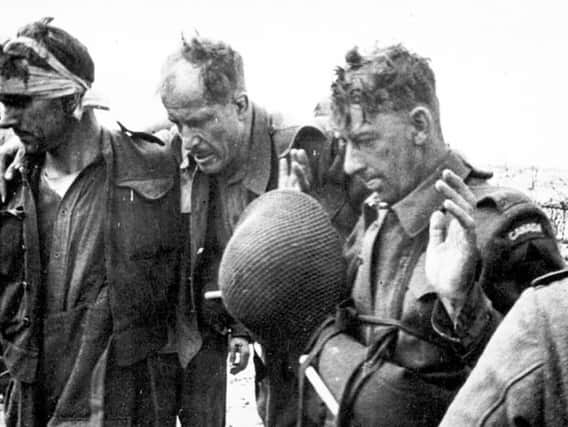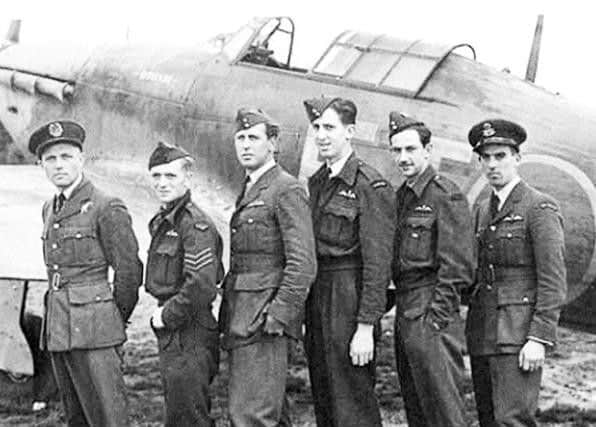Dieppe, 19 August 1942: A catastrophe for Canada


The day saw the RAF involved in an aerial conflict that was bigger than the biggest day of the Battle of Britain. Allied pilots flew nearly 3,000 sorties over a 16-hour period and lost around 100 aircraft during combat, bombing and smoke-laying missions. The Germans admitted to losing 48 aircraft though the RAF claimed they shot down at least 96.
The Royal Navy had 550 killed and wounded with the biggest loss being the destroyer “HMS Berkeley” but dozens of landing craft and other small vessels were also sunk or left beached on the Normandy shore.
Advertisement
Hide AdAdvertisement
Hide AdNewhaven, Shoreham and Littlehampton in Sussex saw most of the raiders embark. Thousands of Canadians had been in billets in Sussex towns and villages for a year or more prior to “Operation Jubilee” while many more had been camped out in the countryside or occupied stately homes such as Firle Place.


Whilst with hindsight it is easy to see many serious flaws in the attack plan formulated by Lord Louis Mountbatten’s staff at Combined Operations HQ, one can fully understand why something needed to be done. In the summer of 1942 Hitler’s war machine looked unstoppable. In Russia the Red Army was in full retreat in the south as the Germans sought to seize the vital oilfields of the Caucasus. In the north the population of Leningrad was under siege with a million or more inhabitants slowly starving to death.
In North Africa in June 1942, 30,000 British and Commonwealth troops had been forced to surrender to Rommel’s Afrika Korps at Tobruk. By August the “Desert Fox” had Cairo, and Egypt’s Suez Canal in his sights with a German advance into the Middle East seeming inevitable.
In the Mediterranean, Malta was under siege by Luftwaffe bombers while convoys carrying vital supplies for the island fell victim to prowling U-Boats. The German submarine menace was even more acute in the Atlantic; in July 1942 the 36 ships of Convoy PQ17 carrying desperately needed tanks, trucks and war materials left Iceland bound for Russia. Just eleven ships survived the deadly attentions of the U-Boats and long-range Luftwaffe bombers and made it to Murmansk or Archangel. Winston Churchill pronounced it “one of the most melancholy naval episodes in the whole of the war.”
Advertisement
Hide AdAdvertisement
Hide AdEarlier in the year there had been two spectacular British successes. The first came in February when British troops parachuted into France at Bruneval and successfully carried off top secret German radar apparatus. The raiders escaped in waiting landing craft. Casualties were light and success was considered complete.


Then in March at St. Nazaire on the French Atlantic coast the Royal Navy and British Commandos rammed the explosives-packed obsolete destroyer “HMS Cambeltown” into the gates of the port’s dry dock. The resulting blast rendered the dock inoperable for the rest of the war denying its use for repairs for Germany’s warships.
With such audacity so richly rewarded, Combined Operations looked to bigger things. Stalin was demanding an Allied “Second Front” in Europe to force the Germans to divert forces from the Eastern Front. At the same time, the thousands of young Canadian men cooped up in England’s South East were champing at the bit. Their frustration at inaction had led to increasing numbers of brawls not just between themselves but also with police, publicans and assorted British military.
One can easily understand how the idea of seizing a French port less than 70 miles from Sussex and holding it for a day took hold. Tanks would be landed to give the force serious firepower backed by naval guns. Meanwhile massed squadrons of the RAF would provide an air umbrella and the opportunity to bloody the Luftwaffe’s nose.
Advertisement
Hide AdAdvertisement
Hide AdThe operation entailed a direct assault on Dieppe’s seafront with infantry and the latest Churchill tanks. Targets to the east and west were to be attacked by other Canadians and British Commandos and it was expected that the tanks would break out of the town and meet up with these flanking forces.
For reasons unknown, a planned airborne assault behind the headlands to knock out German strongpoints overlooking Dieppe’s beach was scrubbed. To avoid civilian casualties, there would be no preliminary air or sea bombardment of the seafront houses. Apparently the Canadian commanders had raised no objections being confident that the tanks would prove decisive in overwhelming the German defenders. Besides which they did not want rubble in the streets holding up their thrust into the town.
Unfortunately, such confidence was wholly misplaced. Next week I will recount the events of 19th August 1942, a day of Allied disaster at Dieppe.